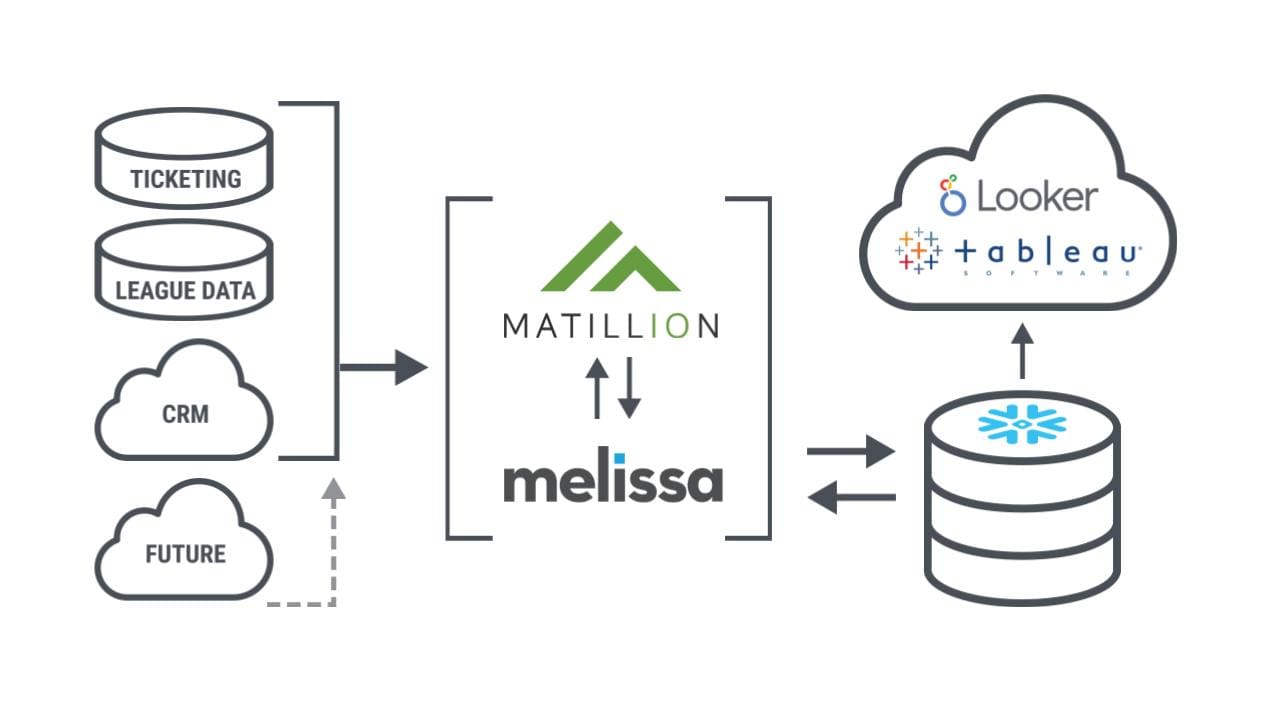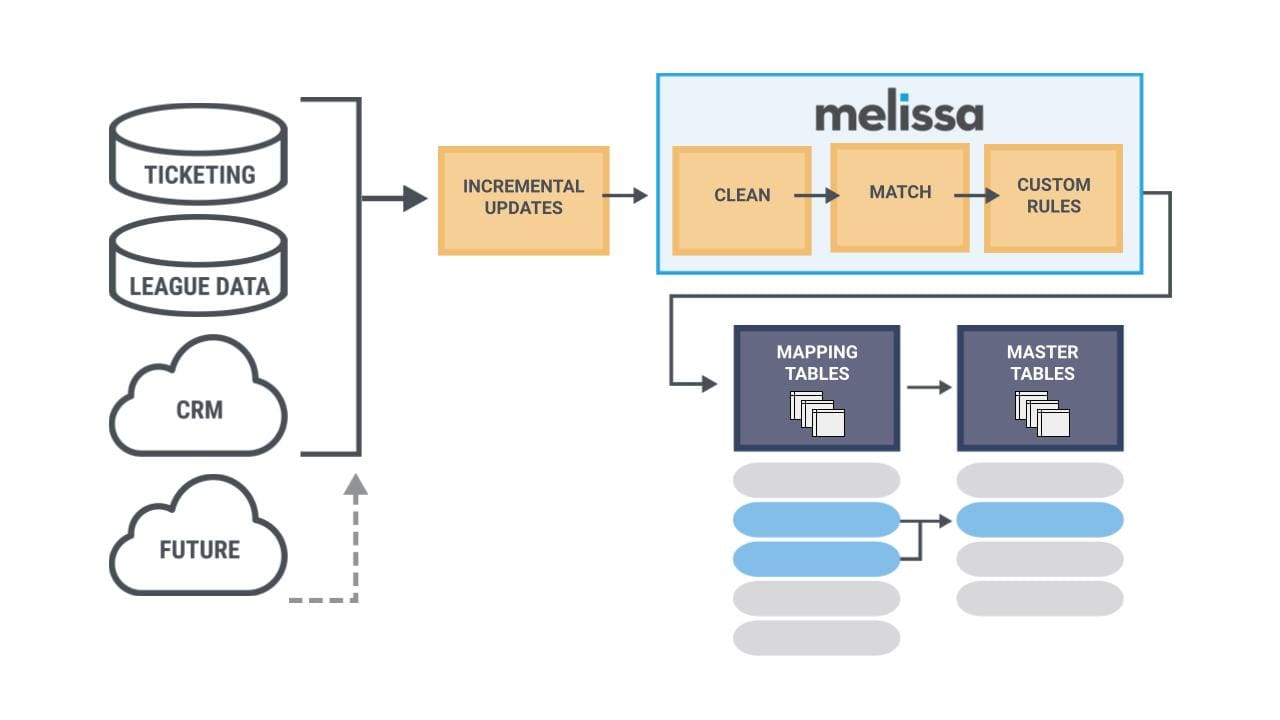- Business Transformation
- Sales & Revenue Optimization
- Finance & Operations
- Information Technology
- Private Equity
- Healthcare & Life Sciences
- High Tech
- Manufacturing
- Explore All Industries →
- Advisory + Diagnostics
- Change Management
- Implementation Services
- Cloud Application Managed Services
- Integrations
- Data Analytics
- Accelerators
- Cloud Applications
- Success Stories
- Insights + Events
- About Us

For sports fans, the San Francisco Giants need no introduction. The team is one of the oldest franchises in baseball and boasts eight World Series Championships and 66 representatives in the MLB Hall of Fame. Off the field, Forbes Magazine ranks the Giants as the fifth most valuable team in the league at an estimated $3.7 billion.
Before:
Siloed Fan Data Impacted Business Growth Opportunities
The Giants had swaths of fan data, but it was disorganized, inaccessible, and siloed across the organization. This made it extremely difficult to generate timely insights that could help the business.
The Giants had hordes of avid fans and swaths of fan data. The challenge was putting it all together to gain insight. Their existing data and analytics solution presented several challenges.
First and foremost, people who needed the data couldn’t access it. All the data was siloed, and the company lacked a single, centralized source of truth. To make matters worse, the data was untrustworthy, containing duplicate records that yielded incomplete or incorrect information.
All of this slowed down reporting and made the team hesitant to even start analysis. Knowing a change was needed, they turned to Data Clymer, a Spaulding Ridge company, for the solution.
Solution:
Unlocking Fan Insights Through a Master Data Management Solution
After reviewing with the Giants, we decided to implement Snowflake and a master data management solution that put timely, accurate insights into the hands of those who need them.
Striving for democratized data for their sales and marketing teams, we implemented a modern cloud data platform comprised of Snowflake, Matillion, Melissa Data, and Tableau.
 With native support of JSON files, the data team could store results from Melissa, their new master data management platform, as a variant data type directly in Snowflake. Then they could easily flatten the data into a structured format for further transformation processing.
With native support of JSON files, the data team could store results from Melissa, their new master data management platform, as a variant data type directly in Snowflake. Then they could easily flatten the data into a structured format for further transformation processing.
As a cloud-native ELT tool, Matillion was the product of choice to bring data from multiple siloed sources into Snowflake and transform it into an analytics-ready format. Matillion is designed to work with Snowflake, enabling the team to:
- Leverage the power of Snowflake to handle large volumes of data quickly and at scale.
- Dedicate Snowflake compute power to Matillion jobs so the team can run Matillion jobs and analytical queries at the same time.
- Create custom metadata-driven ELT applications by creating configuration tables in Snowflake. This allows the team to extract a new table from a source without touching the Matillion code; they just need to add a new entry into a configuration table.
Melissa enabled the teams to clean email addresses and mailing addresses leveraging access to the US Postal Service address database (among other libraries). The Giants could identify if an address is business or residential and attach a latitude and longitude.

Next, the data goes through another Melissa service that applies rules that start with a fan’s first and last name as an anchor, then match across email address, mailing address, and phone number against the entire fan database of millions of records. Melissa then returns a master key for all matches.
The result? A “mapping table” that contains all the original fan contact data and the master key, providing the ability to trace back from the master key to the raw keys. This mapping table data is then rolled up into the master contact, account, and person tables.
The Giants also track historical changes to the master tables to understand what changes may have occurred over time with the master keys. In alignment with data warehousing best practices, we used a slowly changing dimension Type 2 design pattern. That means that any change to the data in a master row triggers the insertion of a new row and marks the old row as historical.
After:
Faster Analytics, Pre-packaged Solutions, and Partner Growth
This new modern data and analytics stack has transformed how the Giants work with data. Silos are gone, and data now lives in a central location in the cloud where it is accessible to the departments that need it. The results speak for themselves:
- Analysis of data became 50% faster
- Better understand of fan insights such as:
- Ticketing
- Stadium data
- Forecasting
- Ad-hoc game-day analytics
- De-duplicated fan records by 15%
- Gained a 360-degree view of fan behavior
- Put data in the hands of several departments
All of this insight has added up to a deeper understanding of customer behavior and the ability to use that information to target customers with the deals and packages they really want.
“We used to base (customer insight) on TDC account number, which overestimated new customers being attracted through offers,” said Rocky Koplik, Vice President of Analytics at the Giants organization. “Now, we can see when a new customer truly enters our database. We can better assess the types of offers that draw their interest and follow their customer path forward.”


